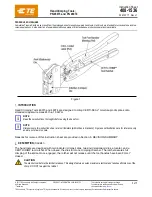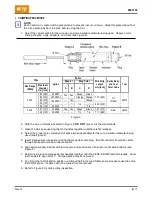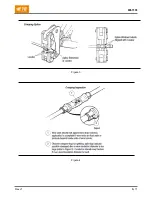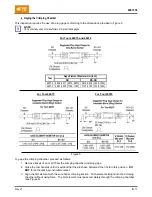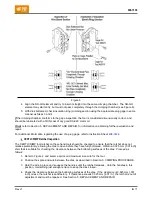
408-1536
Rev J1
4
of 7
MAINTENANCE AND INSPECTION
TE Connectivity recommends that a maintenance and inspection program be performed periodically to ensure
dependable and uniform terminations.
Frequency of inspection depends on:
1. The care, amount of use, and handling of the hand tool.
2. The presence of abnormal amounts of dust and dirt.
3. The degree of operator skill.
4. Your own established standards.
NOTE
The hand tool is inspected before being shipped from the plant; however, it is recommended that the tool be inspected
immediately upon arrival to ensure that the tool has not been damaged during shipment.
NOTE
Due to the precision design, it is important that no parts of these tools be interchanged except the replacement parts listed in
Figure 7.
4.1.
Daily Maintenance
1. Remove dust, moisture, and other contaminants with a clean, soft brush, or a clean, soft, lint-free
cloth.
DO NOT
use any objects that could damage the tool.
2. Make sure the retaining pins are in place and that they are secured with retaining rings.
3. All pins, pivot points, and bearing surfaces should be protected with a thin coat of any good SAE 20
motor oil.
DO NOT
oil excessively.
4. When the tool is not in use, keep the handles closed to prevent objects from becoming lodged in the
dies. Store the tool in a clean, dry area.
4.2.
Lubrication
Lubricate all pins, pivot points, and bearing surfaces with SAE 20 motor oil as follows:
Tool used in daily production - lubricate daily
Tool used daily (occasional) - lubricate weekly
Tool used weekly - lubricate monthly
Wipe excess oil from tool, particularly from crimping area. Oil transferred from the crimping area onto certain
terminations may affect the electrical characteristics of an application.
4.3.
Periodic Inspection
1. Hand tool should be immersed (handles partially closed) in a reliable commercial degreasing
compound to remove accumulated dirt, grease, and foreign matter.
2. Close tool handles until ratchet releases and then allow them to open freely.
If they do not open quickly and fully, the spring is defective and must be replaced; see Section 5,
REPLACEMENT AND REPAIR.
3. Inspect head assembly for worn, cracked, or broken dies.
If damage is evident, see Section 5, REPLACEMENT AND REPAIR for information on obtaining
customer repair service.
SAE is a trademark
Содержание 46073
Страница 3: ...408 1536 Rev J1 3 of 7 Figure 3 Figure 4 ...

